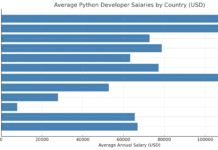Key Takeaways
- AI-driven audience response systems are enhancing real-time engagement with sentiment analysis, automation, and predictive insights.
- Mobile-friendly and cloud-based ARS solutions are driving accessibility, making participation seamless for remote and hybrid events.
- Integration with enterprise tools like CRM and LMS is transforming audience data into actionable insights for businesses and educators.
In today’s fast-evolving digital landscape, audience engagement has become a critical factor in the success of events, meetings, and interactive sessions.
Whether it is a corporate seminar, a virtual conference, an academic lecture, or a large-scale public event, effective interaction between speakers and attendees plays a crucial role in enhancing participation and knowledge retention.
This is where audience response software (ARS) steps in, offering real-time engagement solutions that transform passive audiences into active participants.

As technology advances, audience response systems are rapidly evolving, integrating cutting-edge features such as artificial intelligence (AI), data analytics, mobile compatibility, and cloud-based functionalities.
These tools enable event organizers, educators, and corporate trainers to collect instant feedback, conduct live polls, facilitate Q&A sessions, and analyze audience behavior with actionable insights.
With the increasing demand for hybrid and virtual event solutions, the market for audience response software is expanding at an unprecedented rate.
The audience response software industry is witnessing significant transformations driven by the adoption of AI-driven sentiment analysis, gamification elements, and integrations with communication platforms like Zoom, Microsoft Teams, and Google Meet.
Furthermore, with the rise of remote work and digital learning environments, the need for innovative engagement solutions has become more pressing than ever.
Companies and educational institutions are investing in ARS tools to foster real-time collaboration, enhance training effectiveness, and boost audience participation.
To better understand the growth, adoption, and emerging trends in this sector, we have compiled the most up-to-date statistics, data points, and market insights.
These latest findings highlight key developments in audience response technology, user behavior patterns, and the increasing reliance on digital engagement tools.
From industry growth rates and revenue projections to user preferences and future innovations, these insights provide valuable knowledge for businesses, educators, and event professionals looking to leverage ARS for improved audience interaction.
In this article, we will explore the top 20 latest audience response software statistics, data, and trends that define the current landscape and shape the future of interactive audience engagement.
Whether you are a business leader, educator, event organizer, or tech enthusiast, these insights will help you make informed decisions on selecting and implementing the right ARS solutions for your needs.
Before we venture further into this article, we would like to share who we are and what we do.
About 9cv9
9cv9 is a business tech startup based in Singapore and Asia, with a strong presence all over the world.
With over nine years of startup and business experience, and being highly involved in connecting with thousands of companies and startups, the 9cv9 team has listed some important learning points in this overview of the Top 20 Latest Audience Response Software Statistics, Data & Trends.
If your company needs recruitment and headhunting services to hire top-quality employees, you can use 9cv9 headhunting and recruitment services to hire top talents and candidates. Find out more here, or send over an email to [email protected].
Or just post 1 free job posting here at 9cv9 Hiring Portal in under 10 minutes.
Top 20 Latest Audience Response Software Statistics, Data & Trends
- Global Market Size (2021): The global Audience Response Software market was valued at USD 8.5 billion in 2021 and is projected to grow to USD 13.5 billion by 2027, reflecting a compound annual growth rate (CAGR) of 8.02% during the forecast period, driven by increasing demand for interactive engagement tools across various sectors such as education, entertainment, and corporate events.
- Projected Market Size (2030): The Audience Response Software market size is expected to reach USD 2.4 billion by 2030, growing at a CAGR of 9.2% from 2024 to 2030, showcasing robust growth driven by the rising adoption of digital technologies in education and the expanding use of interactive tools in corporate settings to enhance audience engagement.
- CAGR (2024-2030): The global Audience Response Software market is forecasted to grow at an impressive CAGR of 25% between 2024 and 2030, highlighting the rapid expansion of interactive technologies in live events and virtual settings, as well as the increasing need for real-time audience feedback in both physical and online environments.
- Regional Dominance: North America leads the market for Audience Response Software due to the strong presence of entertainment companies and a well-established education sector, while Europe and Asia-Pacific are expected to grow rapidly due to high adoption rates in education and IT sectors, driven by government initiatives promoting digital literacy and infrastructure development.
- Market Growth Rate (2023-2030): The global market is projected to grow at a CAGR of 8.5% from 2023 to 2030, driven by increasing demand for real-time audience engagement tools in hybrid and virtual events, as well as the integration of AI and machine learning technologies to enhance user experiences and provide actionable insights from audience feedback.
- Verified Reviews: GetApp has verified over 2 million reviews for audience response software products, ensuring authentic feedback from real users about features such as live polling, quizzes, and mobile access, which are crucial for enhancing audience participation and engagement during events and presentations.
- Feature Importance Ratings: Among reviewers, 94% rated quizzes as an important feature, while customizable questions and live results sharing were rated as highly important by 93% and 92%, respectively, highlighting the significance of interactive content in maintaining audience interest and facilitating meaningful discussions.
- Mobile Access Ratings: Mobile access was deemed crucial by 88% of reviewers, emphasizing the importance of flexibility for participants engaging through smartphones or tablets, which allows them to participate seamlessly in polls and quizzes from anywhere, enhancing overall user experience and engagement.
- Revenue Forecast (2020-2025): The Audience Response Software market is analyzed based on revenue in USD millions and volume in kilotons, with significant growth projected due to increased smartphone usage and digital engagement trends, as well as the expanding use of cloud-based solutions that offer scalability and cost-effectiveness.
- Key Players: Major companies dominating the market include Mentimeter (Sweden), Hubilo (India), Slido (Slovakia), Vevox (United Kingdom), and Kahoot (Norway), showcasing global competition in this space and highlighting the innovative solutions these companies offer to meet evolving customer needs for interactive engagement tools.
- Adoption in Education: Europe is witnessing rapid adoption of audience response software in the education sector, contributing significantly to regional market growth during the forecast period, as educators increasingly use digital tools to enhance student engagement and participation in classrooms.
- Cloud-Based Deployment Growth: The emergence of cloud-based audience response software has been identified as a major trend driving adoption across enterprises due to its scalability, ease of use, and lower upfront costs compared to traditional on-premise solutions, which makes it more accessible to small and medium-sized businesses.
- Interactive Content Ratings: Interactive content options were rated as highly important by 91% of reviewers, demonstrating their role in keeping audiences engaged during events or presentations by providing real-time feedback and fostering interactive discussions.
- Polls and Voting Features: Polling and voting tools received a high importance rating from 91% of users, underlining their value in facilitating real-time feedback during meetings or conferences, which helps organizers gauge audience opinions and make informed decisions.
- Projected Growth Drivers: The increasing focus on audience involvement by entertainment companies and event organizers is one of the primary factors driving market growth globally, as these industries seek to enhance audience engagement and create memorable experiences through interactive technologies.
- Global Market Segmentation: The market is segmented by deployment mode into cloud-based and on-premise solutions, with cloud-based solutions gaining significant traction due to their flexibility, scalability, and lower upfront costs, which appeal to businesses looking for cost-effective engagement tools.
- Software Subscription Models: Subscription models for audience response software include monthly, annual, or one-time licenses, catering to businesses of varying sizes and budgets, allowing them to choose plans that best fit their needs and financial constraints.
- Organization Size Adoption: Enterprises with employee sizes ranging from small businesses (10-49 employees) to large corporations (1000+ employees) are key adopters of audience response software solutions, as these tools help enhance internal communication, training sessions, and customer engagement across different organizational levels.
- Real-Time Feedback Tools: Features like live polling and Q&A sessions have become essential for event organizers, with aggregated results displayed instantly to foster interactive discussions during events, allowing for real-time adjustments to content and improving overall audience satisfaction.
- Market Expansion Factors: Increasing digitization in Asia-Pacific countries, coupled with the expansion of IT infrastructure, is expected to drive rapid growth in this region’s audience response software market between now and 2030, as governments and businesses invest heavily in digital technologies to enhance engagement and productivity.
Conclusion
The landscape of audience response software (ARS) is evolving rapidly, driven by the increasing demand for real-time engagement, hybrid event solutions, and data-driven decision-making. As organizations across industries recognize the value of interactive audience participation, ARS tools are becoming essential in corporate meetings, educational settings, virtual events, and large-scale conferences. The latest statistics and trends indicate that the market for audience response software is poised for substantial growth, fueled by advancements in AI-driven analytics, cloud-based solutions, and seamless integrations with video conferencing platforms.
One of the most significant takeaways from these trends is the rise of AI-powered audience response systems. By leveraging artificial intelligence, ARS tools can now provide real-time sentiment analysis, predictive insights, and automated audience engagement strategies. These capabilities allow businesses and educators to create more personalized, data-driven experiences that foster deeper connections with participants. Additionally, the integration of gamification and interactive features is making audience engagement more dynamic, boosting participation rates and enhancing learning outcomes in educational and corporate environments.
Another key trend shaping the industry is the increasing adoption of mobile-friendly and cloud-based ARS solutions. With the shift toward remote and hybrid events, accessibility and flexibility have become top priorities for event organizers and corporate leaders. Cloud-based platforms enable seamless participation from anywhere in the world, while mobile applications ensure that users can engage effortlessly through their smartphones, making ARS tools more versatile and widely adopted across different sectors.
Security and data privacy are also becoming critical concerns, as organizations collect and analyze vast amounts of audience-generated data. The implementation of robust data encryption, compliance with privacy regulations, and transparent user policies are now key factors influencing the adoption of ARS solutions. Companies that prioritize these aspects are gaining a competitive edge in the market by ensuring trust and compliance with global standards.
Furthermore, the growing integration of ARS tools with enterprise software ecosystems is revolutionizing how businesses and institutions utilize audience engagement data. The ability to sync ARS platforms with customer relationship management (CRM) software, learning management systems (LMS), and virtual event platforms is enabling organizations to extract deeper insights and optimize their engagement strategies. This interconnected ecosystem allows businesses to drive more meaningful interactions and refine their approach to audience participation based on real-time feedback.
Looking ahead, the future of audience response software will be shaped by innovations in automation, AI-enhanced engagement strategies, and even more advanced analytics. Organizations that leverage these cutting-edge capabilities will be better positioned to create immersive and interactive experiences that drive stronger audience involvement. With continued technological advancements, ARS tools will become more intuitive, adaptive, and capable of delivering hyper-personalized audience interactions across various industries.
In summary, the latest audience response software statistics, data, and trends underscore the growing importance of real-time engagement, AI-driven insights, mobile accessibility, security, and software integrations. As businesses, educators, and event professionals continue to seek innovative ways to enhance audience participation, ARS solutions will remain at the forefront of interactive engagement strategies. Staying updated on these trends will be crucial for organizations looking to optimize their audience interaction efforts and maximize the impact of their events, meetings, and training sessions.
If you find this article useful, why not share it with your hiring manager and C-level suite friends and also leave a nice comment below?
We, at the 9cv9 Research Team, strive to bring the latest and most meaningful data, guides, and statistics to your doorstep.
To get access to top-quality guides, click over to 9cv9 Blog.
People Also Ask
What is audience response software?
Audience response software is a digital tool that enables real-time interaction, allowing audiences to participate in polls, Q&A sessions, and surveys during events, meetings, or lectures.
Why is audience response software important?
It enhances audience engagement, provides instant feedback, and improves knowledge retention in corporate events, education, and virtual meetings.
What are the latest trends in audience response software?
Key trends include AI-driven analytics, mobile-friendly solutions, real-time sentiment analysis, gamification, and integration with virtual event platforms.
How does AI impact audience response software?
AI enhances audience response systems by providing real-time sentiment analysis, predictive insights, and automated engagement strategies to improve participation.
Which industries benefit from audience response software?
Industries such as corporate training, education, healthcare, event management, and market research benefit from interactive audience engagement tools.
What are the most popular audience response tools?
Popular tools include Slido, Mentimeter, Poll Everywhere, Vevox, TurningPoint, and Pigeonhole Live, each offering unique engagement features.
How does audience response software improve engagement?
It allows for interactive elements like live polling, quizzes, and Q&A sessions, making events more dynamic and increasing audience participation.
What is the market size of audience response software?
The market for audience response software is growing steadily, driven by digital transformation, increased hybrid events, and demand for real-time engagement.
Is audience response software suitable for virtual events?
Yes, many audience response tools integrate with video conferencing platforms like Zoom, Microsoft Teams, and Webex to enhance virtual event engagement.
What role does gamification play in audience response software?
Gamification features, such as leaderboards and rewards, make interactions more engaging, increasing participation and retention in events and training.
How do audience response systems collect data?
They gather real-time responses through mobile apps, web-based platforms, and SMS, providing instant analytics for organizers and presenters.
Can audience response software be used for educational purposes?
Yes, educators use it for interactive lectures, live quizzes, and student feedback, improving learning outcomes and classroom engagement.
What are the benefits of cloud-based audience response software?
Cloud-based solutions offer seamless accessibility, real-time data synchronization, and integration with other enterprise tools for better audience insights.
How secure is audience response software?
Most ARS tools prioritize security with encryption, GDPR compliance, and user authentication to ensure data privacy and protection.
Does audience response software support multiple languages?
Many ARS platforms offer multilingual support, making them ideal for international events and diverse audience demographics.
How does mobile compatibility improve audience response software?
Mobile-friendly ARS solutions enable attendees to participate via smartphones, ensuring accessibility and higher engagement rates.
What integrations are available for audience response software?
Popular integrations include CRM systems, LMS platforms, virtual event software, and communication tools like Slack and Microsoft Teams.
What are the cost factors of audience response software?
Pricing varies based on features, audience size, cloud storage, integrations, and premium analytics capabilities.
Can audience response software be customized?
Yes, many platforms allow branding, customized question formats, and tailored analytics to meet specific organizational needs.
How do real-time analytics enhance audience response software?
Real-time analytics provide instant insights into audience behavior, enabling presenters to adjust content dynamically for better engagement.
What are the key challenges of using audience response software?
Challenges include internet dependency, data security concerns, and resistance from audiences unfamiliar with digital engagement tools.
How do audience response tools enhance hybrid events?
They bridge the gap between in-person and virtual attendees by offering interactive features that engage both groups equally.
What are the latest statistics on audience response software adoption?
Adoption rates are rising as businesses, educators, and event planners seek data-driven engagement solutions for their audiences.
How do audience response systems support remote work?
They facilitate interactive meetings, training sessions, and real-time feedback, making remote collaboration more effective.
Are free audience response software options available?
Yes, tools like Slido and Mentimeter offer free versions with basic features, but premium plans provide more advanced capabilities.
What are the most requested features in audience response software?
Live polling, anonymous Q&A, word clouds, sentiment analysis, and AI-powered insights are among the most sought-after features.
How does audience response software support market research?
It enables instant data collection, audience segmentation, and trend analysis, making it valuable for surveys and consumer insights.
Will AI replace human moderators in audience engagement?
AI enhances engagement by automating responses and insights, but human moderators remain essential for context and deeper interactions.
What is the future of audience response software?
Future developments will focus on AI-driven personalization, deeper integrations with enterprise software, and enhanced real-time audience analytics.































![Writing A Good CV [6 Tips To Improve Your CV] 6 Tips To Improve Your CV](https://blog.9cv9.com/wp-content/uploads/2020/06/2020-06-02-2-100x70.png)


